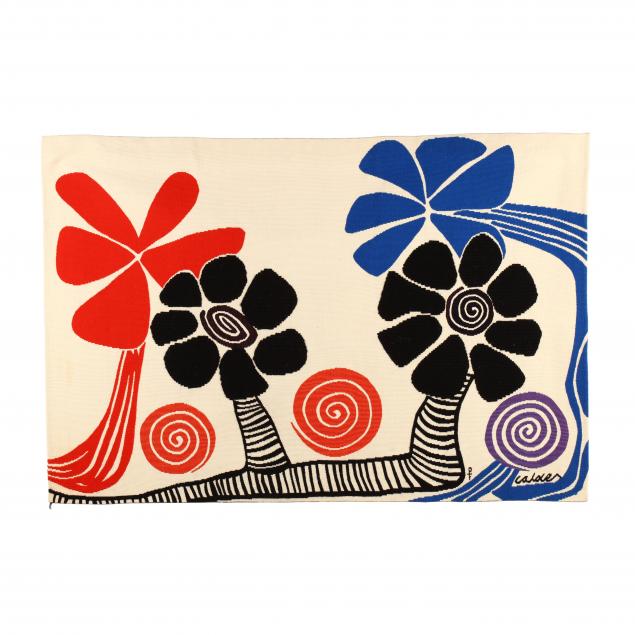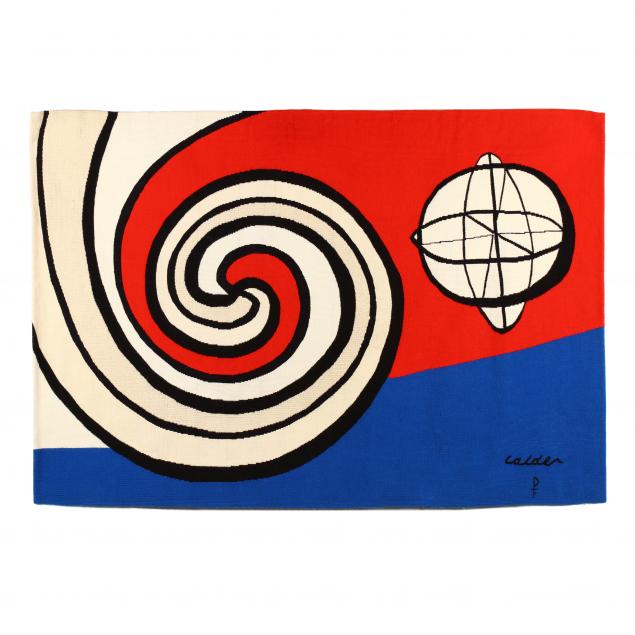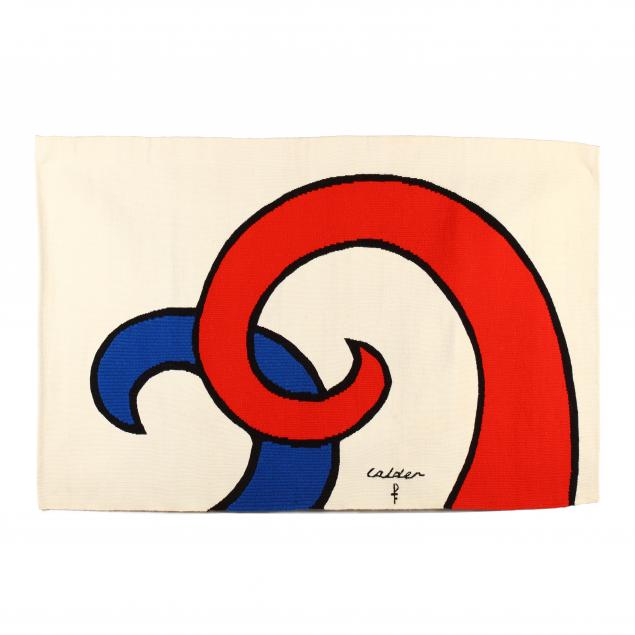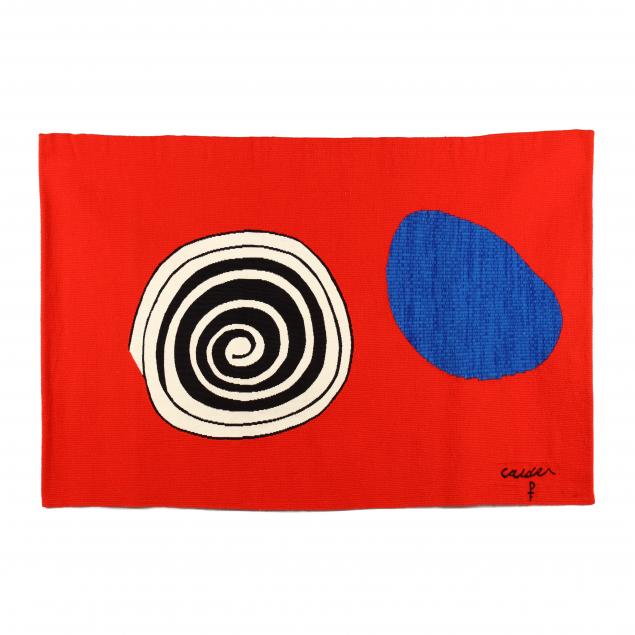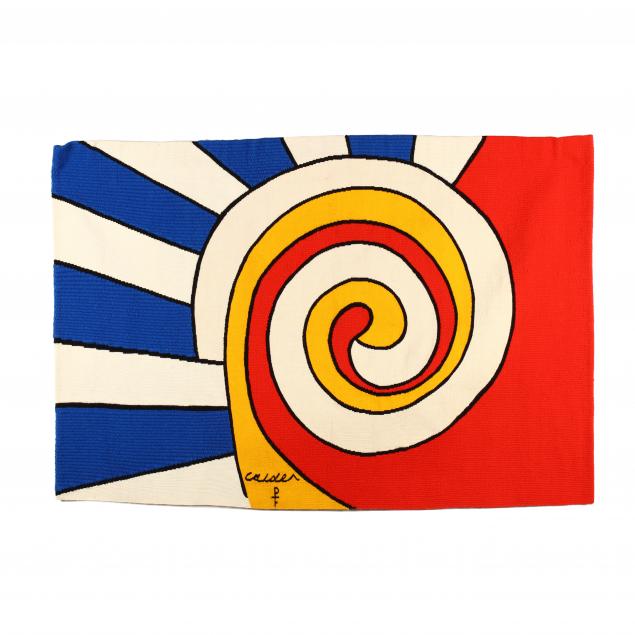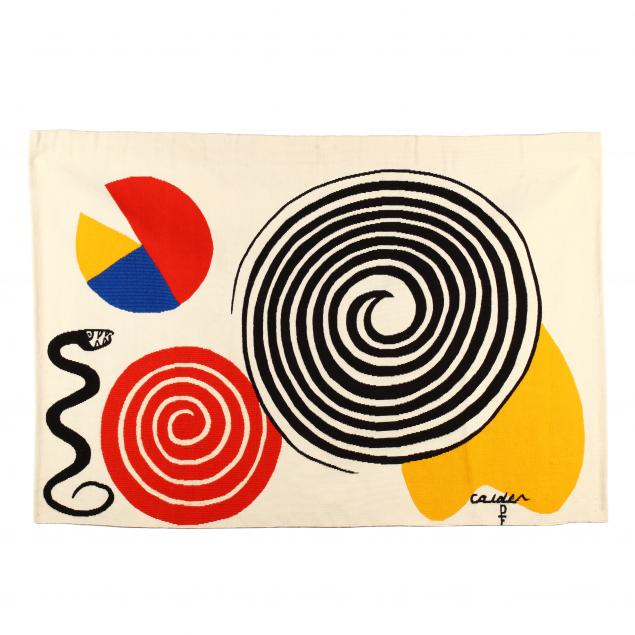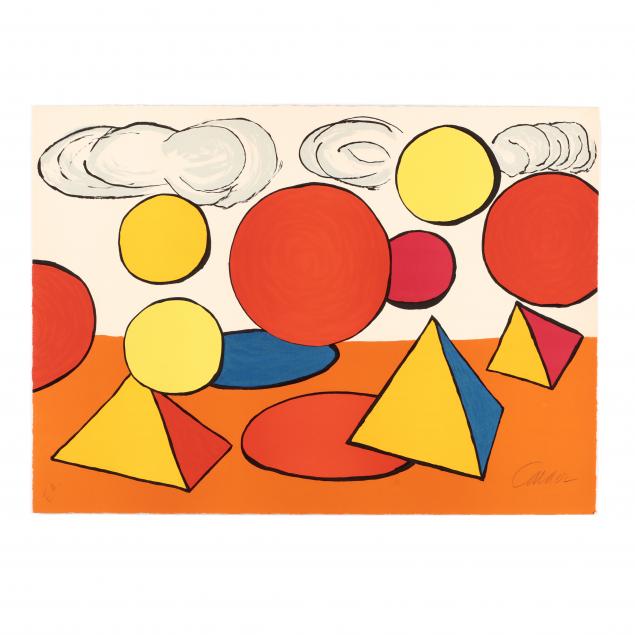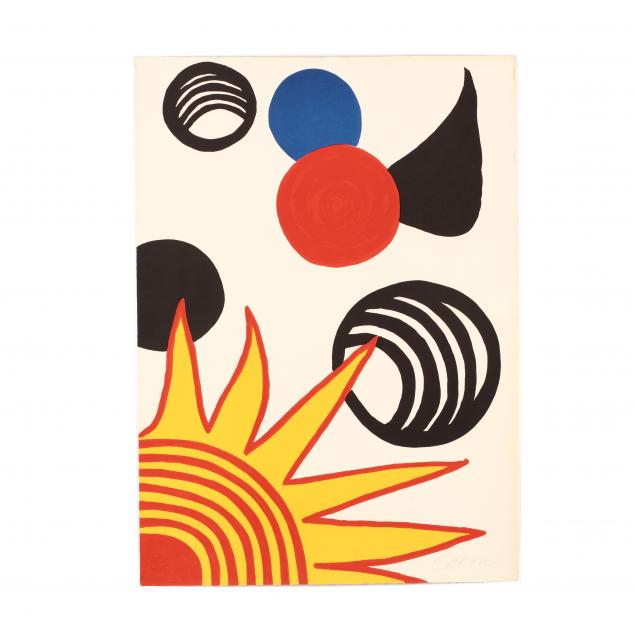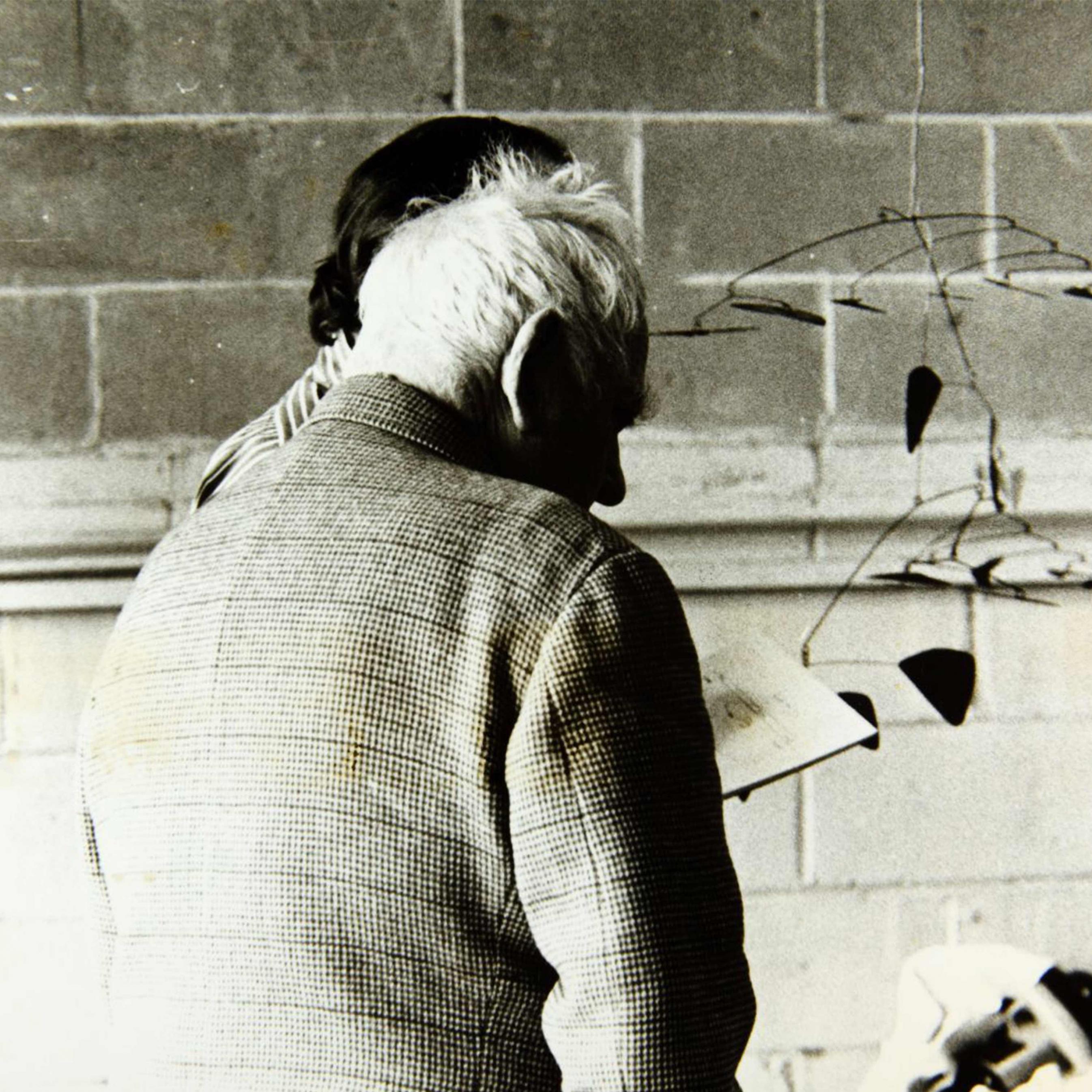
"I don’t have much patriotism. There’s nothing to be patriotic about. Trying to get your country to do what you think is right, that’s what I would consider patriotism."
—Alexander Calder
In 1975, a gallery owner in Vail, CO wrote an enthusiastic letter about the new work by one of her favorite contemporary artists: "A close look shows symbols of America - the waves of the oceans, the defiant snake, the palm trees....but most of all in their color, their energizing spaces, their enthusiasm. They echo the spirit of America." The gallery owner was writing about the Aubusson tapestries that Alexander Calder commissioned for the American Bicentennial, produced just before the iconic artist passed away in 1976. A complete set of these tapestries, belonging to that same gallery owner, one of fewer than 40 sets of the tapestries ever completed, is being offered in our Important Winter Auction.
Calder, so famous for his mobiles, stabiles, and other large-scale, often very public sculptures, turned to the age-old medium of tapestry in the last decade of his life. Perhaps influenced by other artists of his era, such as Miró and Légér, with whom he enjoyed close relationships, and whose paintings were also rendered in tapestry, Calder worked closely with the famed weavers of Pinton Frères, of Aubusson, France to realize his vision in wool and silk. Calder found tapestry to be uniquely suited to giving subtle depth and rich dimension to his deceptively simple, oversized, color-blocked abstractions. The painstaking process of dyeing the fibers just so, mastered by the French weavers over centuries, the subtle variations in weave, and the soft construction, all lent Calder's characteristic sense of movement to otherwise flat compositions.
The purely artistic motivation for someone like Calder to work in tapestry is not hard to understand, given that he experimented with so many different forms over the course of his career, from wire sculpture to jewelry to gouache. But the thematic motivation behind the Bicentennial Tapestries in particular is a bit murkier. Throughout his life, Calder walked a tightrope between mass appeal and counterculture, resistance to the establishment and manipulation of his place within that establishment. The Bicentennial Tapestries were a broad, largely unexamined expression of jubilant American patriotism from an artist who was vocal in his opposition to the American government during the Cold and Vietnam wars, was investigated during the McCarthy period, lent his art and money in the support of progressive political candidates and spent long stretches living abroad.
Ironically, perhaps because of his incredible popularity and commercial success, Calder was often promoted as the quintessential American artist. Sometimes against his will his art was used in exhibitions celebrating the American cannon (often as a counterpoint to communism), and his sculptures and mobiles were commissioned as the artistic anchor to the mid-century architectural expressions of American economic and artistic prowess. While Calder did resist this characterization, he was clearly aware that his reputation as an "accepted" artistic figure lent legitimacy to the counterculture and resistance movements with which he was involved. And Calder had patriotic moments earlier in his life - he tried to enlist during WWII but was turned away. When Calder created the Bicentennial Tapestries, the entire country was swept up in a celebratory fervor. It was a brief moment of relative national cheer, just after the end of the Vietnam War. Even those, like Calder, who had resisted the government so loudly and for so long, gave in to the exuberant expectation of brighter days to come. What could be more American than the potential for things to be better than they have been?
Though their thematic place in Calder's oeuvre may be difficult to pin down, the Bicentennial Tapestries are unquestionably a wonderful example of Calder's style and experimental bent. Unlike a series of wall hangings made from plant fibers by Nicaraguan and Guatemalan weavers that used Calder's designs and were spearheaded as a philanthropic project by an American socialite, and his involvement with which is a source of controversy, all of Calder's Aubusson tapestries are of impeccable provenance. By French law, Aubusson tapestries, including most of Calder's, are limited to an edition of six. For the Bicentennial Tapestries, however, an exception was made - there were to have been 200 sets of the six designs. But only about 37 sets of the tapestries were ever actually produced, so it is now rare that they come to market. The tapestries were extremely laborious to make - a single square yard could take months to complete.
The gallery owner from Vail bought two sets of the Bicentennial Tapestries. As is documented in the original correspondence between her and Calder's dealer in New York, the value of the tapestries had increased even between the gallery owner's purchase of her first and second sets. Because of her generous patronage, Calder gifted her two signed lithographs, both of which are for sale in our Important Winter Auction.
After being educated in her youth in the works of the European Old Masters and Impressionists, our gallery owner fell in love with Calder's work because of its bold color and unique animation. To her, and to many like her, Calder's aesthetic was energetic, audacious, and forward-thinking - attributes that can only be described as American. So while Calder's politics may not have always aligned with those in power, the spirit of his art, complications and all, may have been in the end the perfect celebration of our country.


